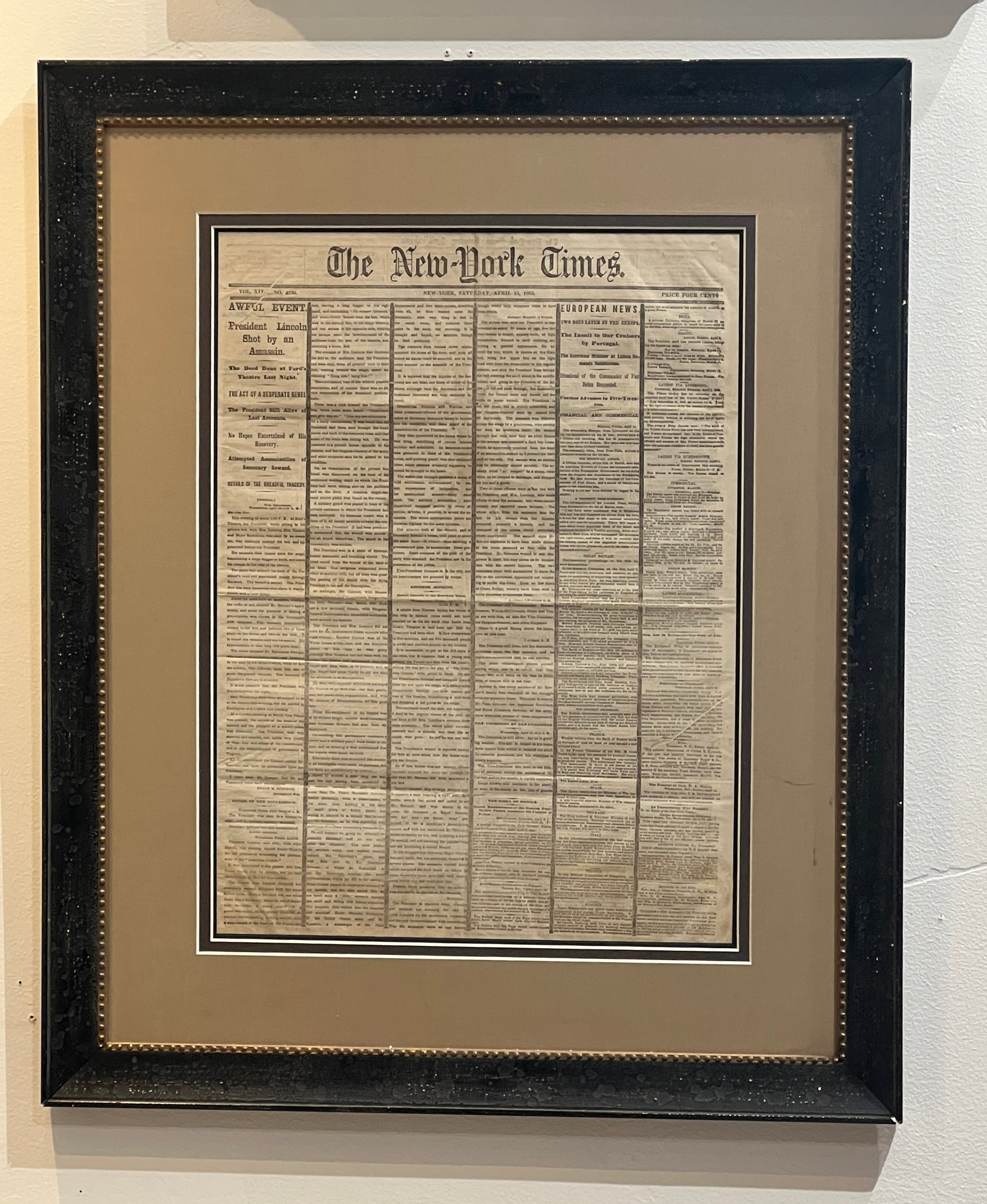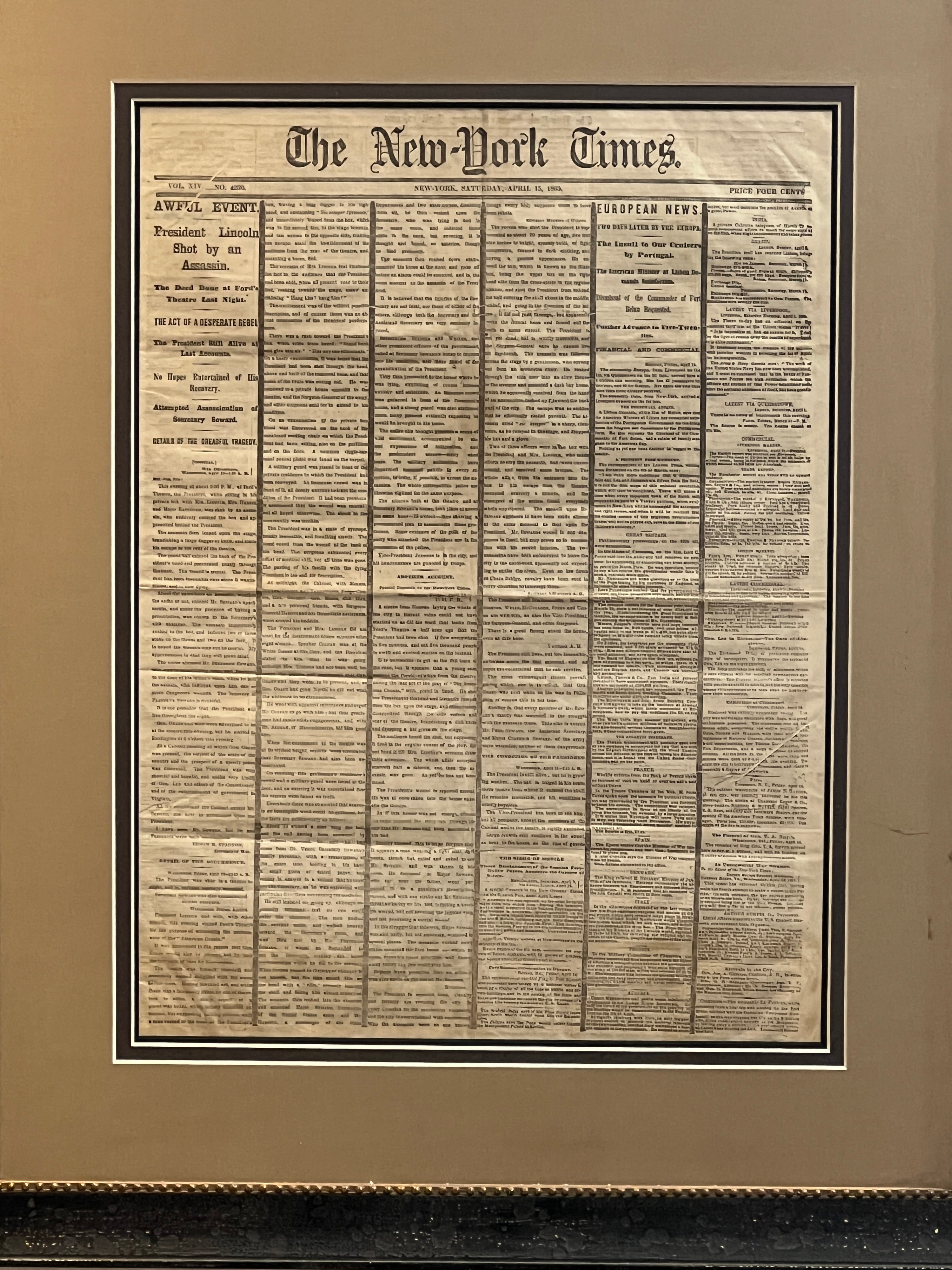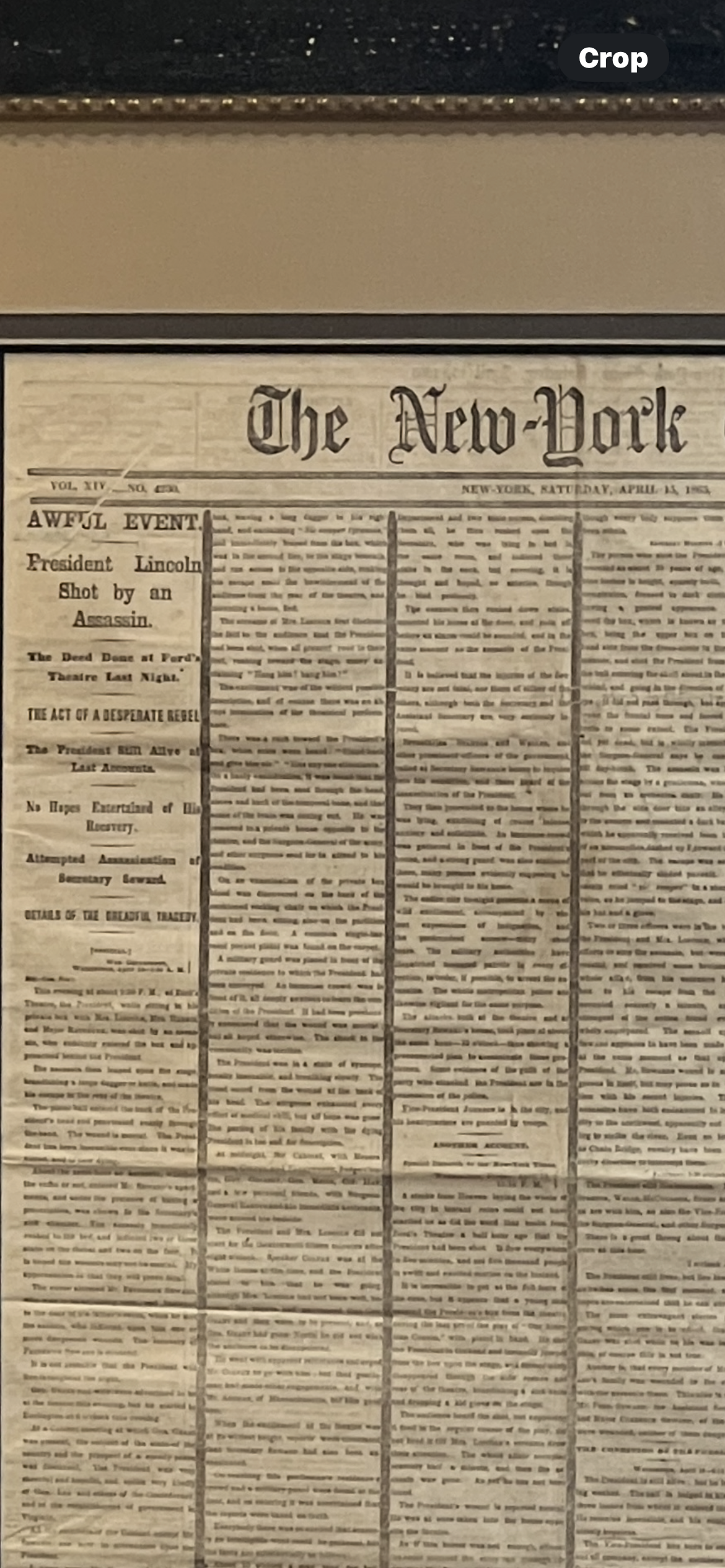New York Times Newspaper Article Reporting on the Assassination of Abraham Lincoln
Couldn't load pickup availability
5R New York Times Newspaper, Vol.XIV No.4230, Saturday April 15th, 1865.
Notes
This framed newspaper article reports on the assassination of Abraham Lincoln and happens to have been published a few hours before President Lincoln was officially pronounced dead.
Abraham Lincoln, the 16th President of the United States, was assassinated on the evening of April 14, 1865, by John Wilkes Booth, a Confederate sympathizer and actor. Lincoln was attending a performance of the play Our American Cousin at Ford's Theatre in Washington, D.C., when Booth entered the presidential box and shot him in the back of the head. Lincoln was taken across the street to Petersen House, where he died the following morning, on April 15, 1865. Booth's assassination of Lincoln was part of a larger conspiracy aimed at destabilizing the U.S. government after the Confederacy's defeat in the Civil War. The event shocked the nation and marked a tragic turning point in American history, as Vice President Andrew Johnson assumed the presidency, beginning the tumultuous Reconstruction era.
The first reporting of the events is by Secretary of War Edwin M. Stanton. Edwin M. Stanton (1814–1869) was the U.S. Secretary of War under Presidents Abraham Lincoln and Andrew Johnson during the American Civil War and its aftermath. Appointed by Lincoln in 1862, Stanton played a crucial role in organizing the Union war effort, managing military logistics, and overseeing the recruitment of soldiers. Known for his toughness and efficiency, he was a key figure in the Union's victory. After Lincoln's assassination, Stanton clashed with President Johnson over Reconstruction policies, leading to his controversial dismissal in 1868. He later became the first person to be forcibly removed from a cabinet position under the Tenure of Office Act. Stanton is often remembered for his dedication to preserving the Union and his significant influence on the war's outcome.
Founded in 1851, The New York Times quickly gained prominence for its thorough and often conservative reporting. Under the leadership of its editor, Henry J. Raymond, The New York Times became known for its commitment to factual, objective journalism, setting a standard for modern news reporting. During the Civil War, it provided comprehensive coverage of the conflict, often supporting the Union cause while also critiquing certain wartime policies. The paper’s coverage of major events such as this article on Abraham Lincoln's assassination as well as battles and Reconstruction which helped shape public opinion. Despite its relatively small size at the time, The New York Times was crucial in shaping the media landscape and influencing political discourse in the United States.
Description
Framed in a black frame with gold beaded bevel. Tan and dark brown double matte. 29 1/2 x 24 1/4 frame. The Newspaper is in excellent condition and well mounted in this display.





